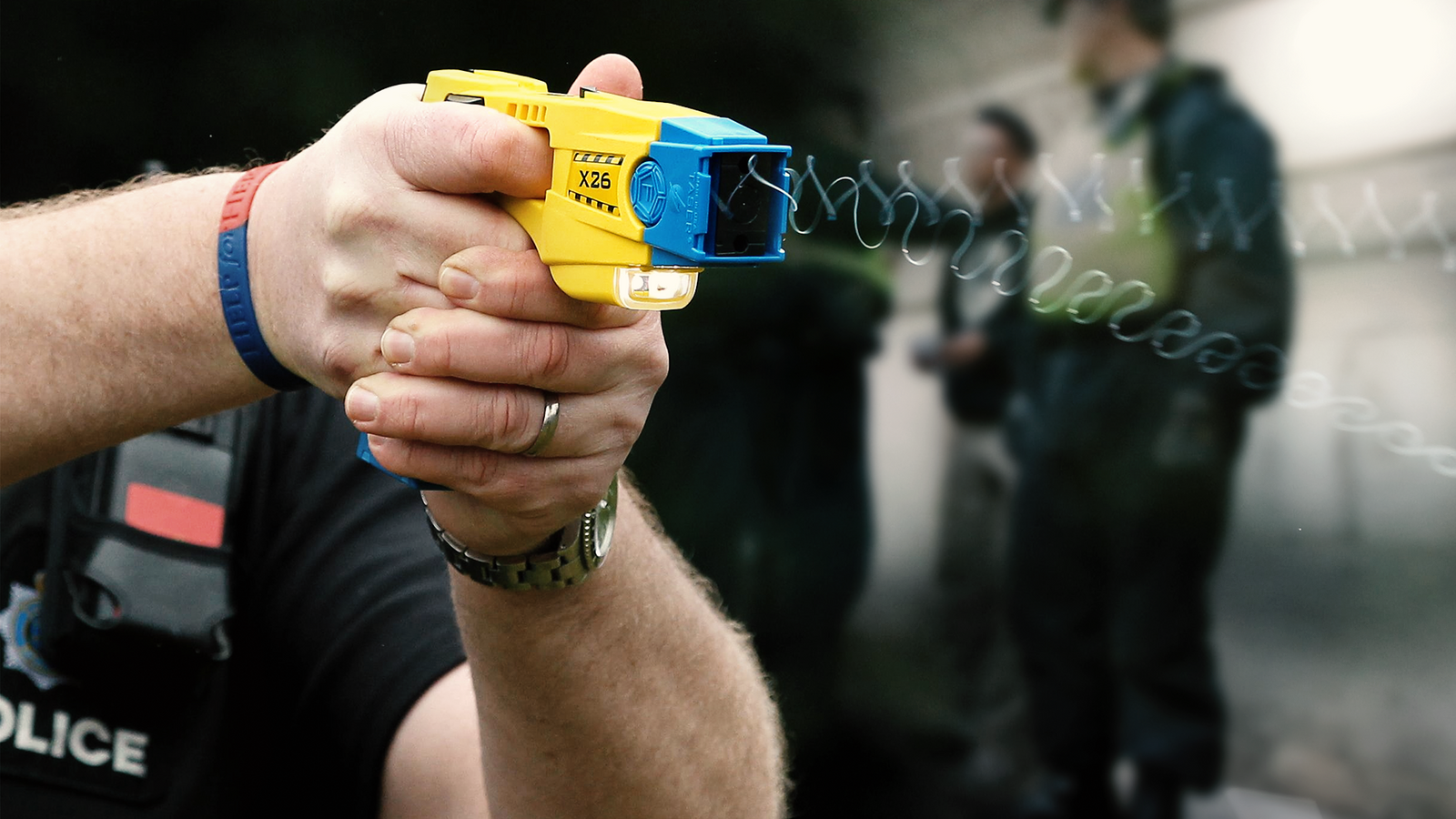A watchdog has found that police were more likely to discharge Tasers for longer against black people compared with white people.
The Independent Office for Police Conduct (IOPC) also raised concerns over the use of Tasers on children and mentally ill people – and said there was evidence some officers made inappropriate comments, including derogatory remarks, during Taser incidents.
The watchdog is warning police that they could “lose the trust” of the communities they serve after reviewing 101 investigations involving the weapons between 2015 and 2020.
The report comes after a Sky News investigation revealed details of incidents where officers fired the 50,000-volt stun guns at children as young as 10, as well as an 87-year-old pensioner, amid a sharp rise in their use in the last three years.
The IOPC analysis has now revealed there were several examples of “missed opportunities” for police to de-escalate the situation before drawing the weapon – and raised questions about whether officers “sufficiently appreciate the risks” Tasers can pose.
A Taser works by sending electric pulses through the body, causing temporary incapacitation.
Michael Lockwood, IOPC director general, said: “We recognise that Tasers are an important tool in policing.
“However, if the concerns identified in our report are not addressed, there is a risk the police will lose the trust and confidence of the communities they serve.”
The National Police Chiefs’ Council said the report was “vague” and “lacks details” – but Amnesty International UK’s policing expert said it should act as a “wake-up call”.
The report – which also highlights examples of good practice – makes a number of recommendations, including improvements to training, guidance and the monitoring of Taser use.
Mr Lockwood said: “Ultimately, policing has to change and be more responsive to community concern or risk losing legitimacy in the eyes of the public.”
The investigations reviewed involved six children, the youngest being 14, as well as four people over the age of 60.
The report found mental health concerns or learning disabilities were a factor in 59 of the cases reviewed, and that 14 cases involved Tasers being deployed in potentially unsafe circumstances.
In one case, a suspect fell into a river after being tasered, and was then further tasered as they tried to get out of the water.
The analysis comes against a backdrop of concern over the disproportionate use of Tasers in cases involving black people.
The device featured prominently in the recent court case of police officer Benjamin Monk, who was convicted of the manslaughter of former footballer Dalian Atkinson. His death followed an “excessive” 33-second Taser deployment.
The highest number of discharges against one individual was 12, although evidence suggested that none of them were successful against the suspect, a black man with a history of serious mental health issues, who was seen with two knives.
Responding to the report, Chief Constable Lucy D’Orsi, from the National Police Chiefs’ Council, said: “Unfortunately, this report by the IOPC is vague, lacks detail, does not have a substantive evidence base and regrettably ignores extensive pieces of work that are already well under way and, indeed, other areas where improvement could be made.
“Focusing on these smaller number of cases missed an opportunity to consider Taser use more broadly, and unfortunately has resulted in recommendations which are mostly out of date and not based on the realities of policing.”
Oliver Feeley-Sprague, Amnesty International UK’s policing expert and a member of the independent advisory group to the National Police Chiefs’ Council lead on Tasers, said: “This should be a wake-up call to the police and the Home Office over the use – and misuse – of these potentially lethal weapons.”
Deborah Coles, director of the Inquest charity, said the recommendations “do not go far enough to create the systemic change needed”.






















